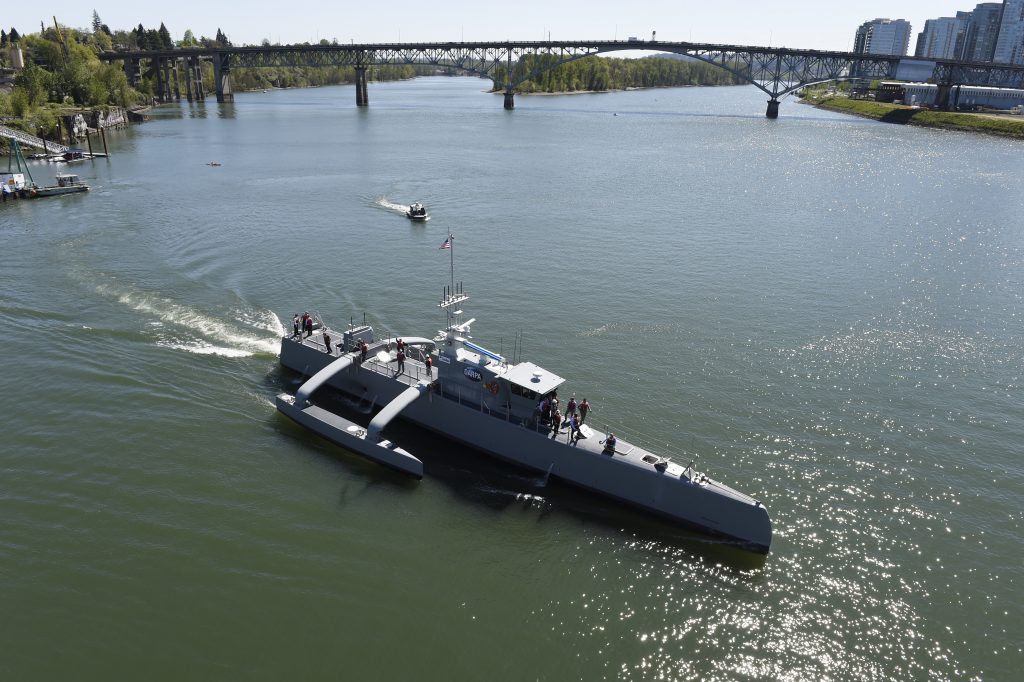Transformative priorities for national defense
FORWARD DEFENSE
REPORT RELEASE
A changed defense battlespace and an expanding defense domain
Today, the United States faces multi-theater and multi-domain challenges different from any presented since World War II—and, in fact, ever. The US homeland has itself become an active defense theater, and China and Russia present major concurrent defense challenges in the Indo-Pacific and European theaters, respectively. Within this context, the combination of stealth, precision-guided munitions, network-centric warfare, and sea and space control that gave the United States battle dominance for many years will no longer suffice. If the United States fails to bolster cyber and supply chain resilience, leverage emerging military and dual-use technologies, and work effectively with its allies and partners, it will surrender its longstanding competitive advantages.
Therefore, as the Department of Defense prepares its next National Defense Strategy, report authors Franklin D. Kramer and Lt. Col. Matthew R. Crouch address these pivotal challenges by advancing key transformative priorities for an effective US national defense strategy. This latest report by Forward Defense organizes these key priorities geographically into two main sections: 1) the role of defense in the United States itself—the “American theater”; and 2) the establishment of a tailored forward defense strategy, which gives simultaneous recognition to China as the primary pacing challenge and Russia as a capable antagonist. While the report is not intended to address all elements of a national defense strategy, it highlights those areas where transformative changes are necessary to make the strategy successful.
The American theater
The United States itself has become an active operational defense theater. Continuous adversarial intrusions have generated the concomitant necessity for greater defense, intelligence community, and private sector engagement in defense of the American theater. Successfully meeting the challenges requires a strategy of “effective resilience/defend back,” which would include the following recommendations:
- Developing and implementing cybersecurity resilient architectures for key critical infrastructures through a “zero trust”-plus approach
- Creating an integrated national cyber defense center headed by the national cyber director with outreach to the private sector
- Coordinating government engagement with private sector key critical infrastructures
- Expanding the National Guard’s cybersecurity roles, which would have immediate high value for states/localities and key critical infrastructures as well as for Defense Department missions in the event of a high-end conflict
- Ensuring the resilience of the supply chains for defense and other key critical infrastructures required for defense mission assurance
The forward theaters
China and Russia each present major defense challenges. As a consequence, the United States needs to establish a tailored multi-theater force posture, with an appropriate balance between the Indo-Pacific and Europe. An important element in each theater is an increased role for allies. Additionally, cybersecurity and supply chain resilience are as required in the forward theaters as they are in the American theater, and emerging technologies, effective combat formations, and multinational command and control will be key elements for success in a changing battlespace.
For the Indo-Pacific, successfully meeting the challenges requires the following actions:
- Japan, Australia, the Republic of Korea, and NATO allies committing to support the United States in the event of a conflict with China including over Taiwan
- Establishing multinational force capabilities including
- with Japan and Australia, a combined naval task force, combined air operations center, and multi-domain command and control system; and
- with allies and partners, a combined joint task force for maritime support including freedom of navigation, fishing rights, counter-piracy, search and-rescue, humanitarian assistance and disaster relief, and a common maritime picture
- Establishing cybersecurity and supply chain resilience with allies
- Utilizing emerging technologies and naval mining capabilities including unmanned vehicles, cyber and directed energy, hypersonic missiles, and expanded mine clearing and mine laying capabilities

For Europe, successfully meeting the challenges requires the following actions:
- Establishing cybersecurity and supply chain resilience with allies including by developing and implementing NATO “continuous response” cyber capabilities
- Making the NATO Readiness Initiative (NRI) effective by
- organizing, training, and exercising the national forces;
- integrating the NRI forces into an effective command and control structure; and
- terminating the current NATO Response Force structure, but maintaining the Very High Readiness Joint Task Force
- Enhancing NATO’s mobility capabilities and increasing European and US forward presence
About the authors

Subscribe
Sign up for updates from Forward Defense to hear the latest on the trends, technologies, and military challenges shaping tomorrow.

Forward Defense, housed within the Scowcroft Center for Strategy and Security, generates ideas and connects stakeholders in the defense ecosystem to promote an enduring military advantage for the United States, its allies, and partners. Our work identifies the defense strategies, capabilities, and resources the United States needs to deter and, if necessary, prevail in future conflict.
Image: Uniformed and civilian cyber and military intelligence specialists monitor Army networks in the Cyber Mission Unit’s Cyber Operations Center at Fort Gordon, Ga. (Photo by Michael L. Lewis, US Army Cyber Command Flickr)

